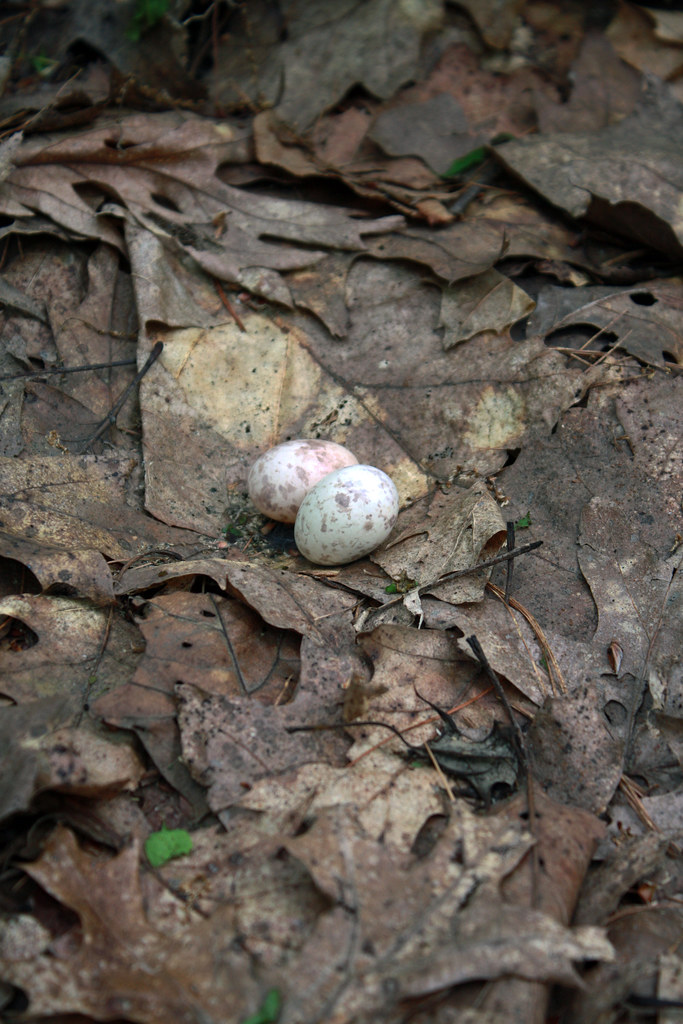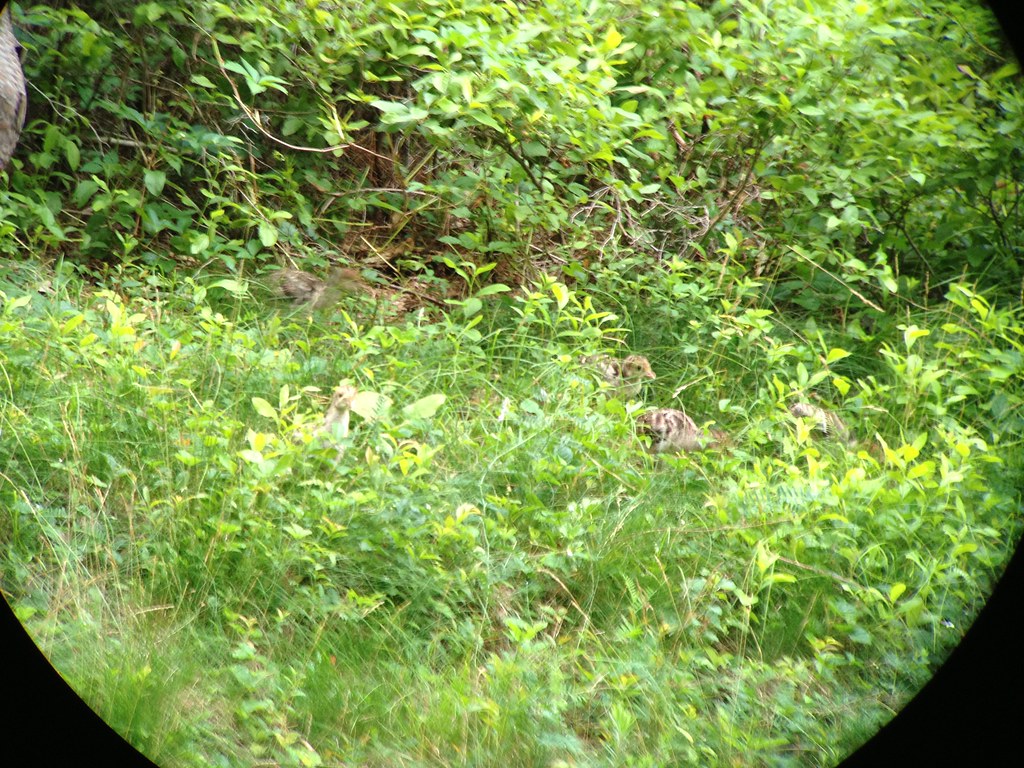 |
| Eastern Whip-poor-will nest, Prescott Peninsula, June 2013 (photo courtesy of Chris Buelow) |
"I was actually exploring the steep southern ridge of Mt Ram
and flushed the bird while walking along the narrow ridgeline. The bird
fluttered up only about 6' high, then flew off to the side only about 15', but
out of sight behind a pine sapling. The eggs were right there, on the bare oak
leaves, equidistant between a triangle 3 white pine saplings, each about 20'
from the other. While walking I was actually thinking about your route out here
and was wondering if this open oak forest, really one of the few remaining good
examples of this habitat out here that hasn't been invaded by white pine, was
the source of your birds. It was pretty wild."
If anyone has any other locations in the area where they
have heard whip poor wills please consider contacting Chris (I can provide his
contact info if anyone needs it) to potentially set up another survey route so
we can keep taps on this declining species and see where they are still hanging
on so we can hopefully provide data to those making decisions on how to manage
certain areas to keep the birds around.
More information regarding this species can be found at the Cornell
Lab of Ornithology website: http://www.allaboutbirds.org/guide/Eastern_Whip-poor-will/id
Some of the ‘cool facts’ of the Eastern Whip-poor-will
posted on the above mentioned website include the following:
Cool Facts
- Eastern Whip-poor-wills lay their eggs in phase with
the lunar cycle, so that they hatch on average 10 days before a full moon.
When the moon is near full, the adults can forage the entire night and
capture large quantities of insects to feed to their nestlings.
- Eastern Whip-poor-will chicks move around as nestlings,
making it difficult for predators to rob the nest. The parent may help by
shoving a nestling aside with its foot, sometimes sending the young bird
tumbling head over heels.
- The male Eastern Whip-poor-will often will investigate
intruders near the nest by hovering in place with his body nearly vertical
and his tail spread wide, showing off the broad white tips of the tail
feathers.
- Eastern and Mexican Whip-poor-wills used to be
considered one species, simply called the Whip-poor-will. But in 2011 they
were split into two species based on differences in mitochondrial and
nuclear DNA. Eastern Whip-poor-wills give faster, higher-pitched whip-poor-will calls and have more colorful eggs than their western
counterparts.
- The Eastern Whip-poor-will may locate insects by seeing
the bugs’ silhouettes against the sky. Its eyes have a reflective
structure behind the retina that is probably an adaptation to low light
conditions.
- The oldest recorded Eastern Whip-poor-will was 4 years
old.
 |
Eastern Whip-poor-will, Covey WMA, May 18, 2013 |
 |
| Wild Turkeys, Quabbin Park, MA, July 1, 2013 |
 |
| Wild Turkey, Quabbin Park, MA, July 1, 2013 |
No comments:
Post a Comment